Global asset manager Robeco leverages a low touch and high touch trading team that spans across three continents. And, like most asset managers across the street, its global equity trading desk plays host to a variety of characters, each bringing their own individual string to the wider team’s bow.
The firm claims to be an early innovator on several counts. Namely, onboarding algo wheels before they became mainstream and incorporating trading researchers into their trading desk long before many had budget to do so.
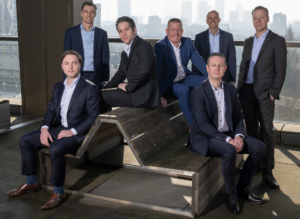
Lars ter Braak, Robbert Wijgerse, Tomaz Mota, Dennis Grashoff, Edwin Scheffers, Bastiaan Berendsen, Martin van der Schans
“Most asset managers do not have the scale to hire data scientists specialised in trading research. In terms of the number of companies that have a dedicated trading research team, we might be one of the top players,” explains Lars ter Braak, one of the institution’s two trading researchers based in Rotterdam.
Robeco formerly had a central multi-asset trading desk across equities, foreign exchange and fixed income, headed up by Robbert Wijgerse. However, unlike the many buy-side desks looking to achieve synergies by merging asset classes, Robeco chose to separate its trading desks by asset class in 2017 in the pursuit of greater efficiency.
The asset manager now has its core desks for equities, fixed income and foreign exchange in Rotterdam. Making up its global equities refit are two low touch and two high touch traders based in the city, with another two high touch traders in Hong Kong and two based in the US.
“In the end, the efficiency that we hoped to reach with having one desk was not realised and therefore we said we want to focus on one specific asset class with dedicated equity traders, fixed income traders and FX traders,” says head of equity trading and operational portfolio management at Robeco, Robbert Wijgerse. “We now have the same focus on the asset class as the underlying portfolio managers have.”
Algo wheels and more
Robeco claims to be an early innovator when it comes to electronification and has a large refit in quant-based and program trading out of its central location in Rotterdam. Among the innovations the institution suggests it was quick to adopt is algo wheels, claiming to have used them for cash equities since as early as 2016. Making up the firm’s Rotterdam-based low touch duo are senior equity trader Bastiaan Berendsen and equity trader Tomaz Mota.
“There was more demand [on the trading desk] for people that were smart with systems, keen to use algos, and who also have more of a research-focused idea of trading and less on gut feeling,” says Berendsen, who joined Robeco in 2006 as a data and application manager.
Berendsen recently travelled to Robeco’s Asia offices to explore launching more algo wheels for equities in the region. “More than 50% of all of our equities orders globally are executed via an algo wheel, and we are using algo wheels for index futures but is not yet at the same level of flow.”
Berendsen’s experience proved essential when Robeco made the decision to implement FlexTrade as its execution management system, having previously used Charles River for both order and execution management.
Like Berendsen, Tomaz Mota has had a similar journey to the trading desk. Until joining Robeco around two and a half years ago due to a desire to feel more connected to the action, he had always been in roles relating to trading but never in the front-office.
“[As a trader] you’re in contact with the decision- making from the portfolio managers and you get more of a view of the market instead of just being in the pipes and fixing how things settle and how the transfers are done,” he says. “Executing the trades is much more exciting.”
Among the projects the low touch team is working on via its EMS provider is the merging of orders for index futures, as well as feeding trading and order information via APIs directly into the trading system to enhance execution.
“We are not immediately going to trade on the signal – there will always be human oversight at least in the foreseeable future – but these solutions can really lead to being one of the best trading desks in the future,” explains Berendsen.
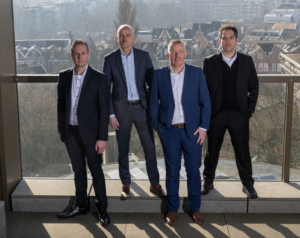 “We are working together with FlexTrade to see how we can trade these [index futures] via algo wheels. We want our brokers to be able to accept receiving pre-allocations for these orders. If we’re trading for multiple accounts, we need to pass on the accounts numbers to them via FIX. That’s one of the big improvements of having FlexTrade – making sure that we are not going to cross for accounts that do not allow crossing for instance.”
“We are working together with FlexTrade to see how we can trade these [index futures] via algo wheels. We want our brokers to be able to accept receiving pre-allocations for these orders. If we’re trading for multiple accounts, we need to pass on the accounts numbers to them via FIX. That’s one of the big improvements of having FlexTrade – making sure that we are not going to cross for accounts that do not allow crossing for instance.”
Much of the innovation opted for by Robeco’s low touch trading offering is fuelled by its in-house trading research team who work with the trading desk on a project-by-project basis – aimed at enhancing the way the team executes to minimise costs and reduce market impact. The asset manager first incorporated trading researchers into its workflow in 2016 – somewhat earlier than many firms across the street. This is something that Berendsen says has had tangible results on the way the institution executes, in particular around its level of passive trading.
“We have large quant strategies in developed and emerging markets,” he explains. “For trading many different stocks, it makes sense to trade relatively passively. In general, the quant strategies do not expect to have a lot of short-term alpha, so then you don’t need to be trading extremely aggressively in the market.”
Research is rocket fuel
The team’s trading researchers are Robeco’s not-so-secret sauce. Also based in Rotterdam with the low touch team are Lars ter Braak and Martin van der Schans, making up Robeco’s entire global trading research refit. The pair sit on the desk with the execution team and have regular updates with the trading desk. According to Van der Schans, having a trading research offering is essential for assessing the wider picture of the markets, allowing the traders to focus their attention on what’s taking place on their blotters day-to-day.
“The world of the traders is [centralised around] the trades they have to finish on a particular day,” he says. “For research, you need a bit more focus and some distance from what’s going on. The skillset is different. Traders are much more practical fast decision makers and they are quick on their feet. As a researcher, you have more time to dive into details, think about things, and build things from the ground up.”
The pair’s primary focus is analysing the firm’s interaction with the market and the impact they are having with it via how the trading team is taking positions. As a long-term investor, the institution is keen to avoid influencing prices in the market.
“We started out with evaluating execution algorithms and trader behaviour but now we’re at the point where we started research on providing real-time recommendations to traders,” says Ter Braak who joined Robeco in 2021. “Order allocation is an interesting challenge. First and foremost, you must ensure that you are comparing apples to apples, which we do through randomised controlled trials. Second, you should allocate most orders to the best performing brokers, while others should receive sufficient orders to determine which broker performs best in the next period.”
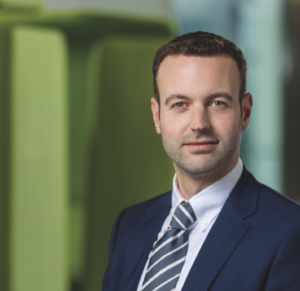
Jules Boletis
Central to much of the team’s work of late has been a focus on enhancing its use of real-time data to improve execution and aid the high touch decision-making processes. The driver behind it – using the data to assess whether alternative behaviours could have reduced the firm’s costs through back testing.
“Over the years, we have stored data centrally in a database and we have continued to add carefully selected datasets to enhance our decision-making process,” explains head of the equities trading desk, Wijgerse. “Going forward with the use of new technologies, we’d like to assist traders with their decisions during trading instead of post-trade like typical TCA [transaction cost analysis]. Originally TCA is more backward looking and we want to be forward looking.”
Trading research at Robeco for the last few years has been focused on automatically routed flow that goes to broker algorithms – importantly focusing on this selection process and its broker ranking capabilities. Now, both Ter Braak and Van der Schans are looking towards the firm’s global high touch traders.
“Our high touch traders typically execute larger trades that can potentially have a lot of market impact,” says Van der Schans. “They are trying to identify when to speed up or when to slow down in the execution. If the trade is large, it’s not always easy to find the liquidity. They have to determine when the price is good and when they want to do more.”
Global high touch
Robeco has two equities high touch traders in each region it operates in – two in Rotterdam, two in Hong Kong and two in the US – allowing it to offer an around the clock trading model.
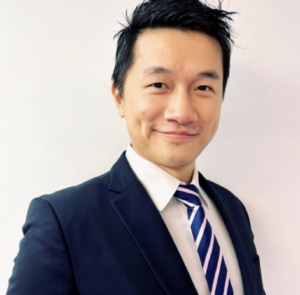
Jayson Suen
Representing the firm’s European equities high touch refit are senior equity traders Edwin Scheffers and Dennis Grashoff – two of the longest standing members of staff in Robeco’s equities trading team, with 15 and 34 years under their belts, respectively. Both are first hand witnesses to the rapid evolution of electronic trading.
“If you don’t have any luck, you won’t make it in this industry, but you need to have a very good network and be connected with a lot of brokers. In the past you would pick up the phone. These days a lot of things are going by IB chat to deal,” says Grashoff. “The only sad thing about that is you don’t hear the tension in somebody or the room on the other side. If something is happening you hear that in the background. On the chat you don’t see that.”
Scheffers confirms the team has IB chat scraping tools with automatic notifications to make sure the pair are able to capitalise on potential natural liquidity opportunities. If natural can’t be found, the pair favour a dark only liquidity algorithm to kick off an order in a way that won’t create too much market impact. For Scheffers, a love of the markets has kept him tied to the desk and committed to staying in a high touch role throughout his career.
“I hardly ever leave the desk during market hours. I bring my sandwiches from home and I like to watch the market [throughout] the whole day and do not want to miss any opportunities during lunchtime,” he says.
“I started my career on the sell-side. At that time, I would stay behind my screens all day. If you would say that a colleague trader was out for lunch or something, they [clients] would immediately withdraw their orders. You had to stay on the desk, see everything, and contact them immediately on every market-move.”
Representing Robeco in Hong Kong are trader Jayson Suen and head of Robeco’s Asia Pacific trading desk, Valéry Derbaudrenghien, who joined Robeco two and three years ago respectively, both from previous buy-side roles. The pair cover a 12-hour trading day kicking off with Australia and New Zealand at around 6:30 am local time. And, given that they are just two on the desk, the pair have derived an early and late shift system to manage the day.
“The bulk of what we trade comes overnight and will be quant orders,” explains Derbaudrenghien. “That keeps us busy right from the morning.”
Robeco has an equities offering in Asia but has also recently launched a fixed income fund from Singapore thanks to increased demand in the region. The fund began trading at the start of last year. The firm trades half of its Asian equities flow electronically and half with cash, Derbaudrenghien confirms, adding that the way the firm’s Asian trading offering is set up makes it unique in comparison with its local peers.
“Part of the Asian trades will still be traded from Rotterdam because we have large quant programs and cash must be managed between regions. Therefore, everything that’s very liquid will be traded overnight through programs by our Rotterdam colleagues with oversight from the Hong Kong desk,” says Derbaudrenghien.
Given the market structure nuances of Asia, Suen stresses the importance of the high touch traders on the ground in the region to find natural liquidity. Asian markets have fragmented and regionalised regulatory and market structures to adhere to, he explains, with varying levels of appetite for dark trading. This is something the Hong Kong based pair must manage.
“The Asia region is very different compared to Europe and the US because the liquidity here is very light. It was worse during Covid because there was no volume,” says Suen. “We base a lot of algos on the machines, but then at the same time, we trade a lot in the crossing platforms and in the dark venues.”
“At times, you can cross against a VWAP order 100 shares at a time without problems and it will complete half of your order in the dark,” adds Derbaudrenghien. “Managing the dark is very important for Australia, Hong Kong and Japan. Overall, we cross a lot of blocks in those markets and in ASEAN markets as well, or in New Zealand early in the morning.”
Across the Pacific sits Robeco’s US-based high touch trading team. As a European asset manager with a trading desk based in the US and a global outsourced middle-office provider, Robeco has found itself better equipped than others to weather the fallout caused by the market’s shift to T+1 settlement in the US.
“However, that [the T+1 shift] has definitely had an impact on portfolio implementation and operations and not just the trading desk,” says Wijgerse.
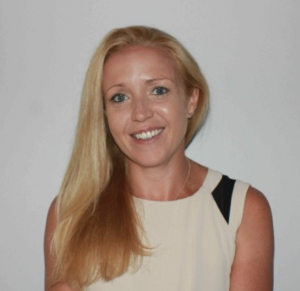
Tamara Botteldooren
Sitting in the US are trader Jules Boletis and senior trader Tamara Botteldooren, both of whom were drawn to the region by a love of the markets and of living abroad. After three months on an exchange programme to Boston with Robeco, Botteldooren asked to move to the US permanently. Originally joining Robeco in 2004, she is now in her second decade at the asset manager.
“The firm I left to join Robeco was still using spreadsheets to send orders,” she explains. “I joined Robeco as they were already way ahead of everyone else technology-wise back in 2004. Today we are still one of the leaders.”
Working alongside her is Jules Boletis who has been with Robeco for five years and has spent the last two of those in New York. The US desk does not have local portfolio managers. Instead, Botteldooren and Boletis represent and execute on behalf of the Rotterdam and Hong Kong based equities portfolio managers.
“Our value add is in market insights, knowledge of trading strategy and the implementation thereof. One of the sources I’m using more and more for data and information is social media. Mainly Twitter [X],” explains Boletis. “Having a social media feed, it feels like you are in a multi-asset dealing room even if you are in a small team in New York because you receive so much information. It’s stock-specific [insights] but also market wide because different assets all correlate. It’s important to be in the loop of all those market movements.”
Each member of the global Robeco equities team brings an individual skillset to the trading desk. As an innovator from early on, the long-only asset manager’s set up has left it agile in the wake of major market shifts taking place globally in recent years – not least the seismic shift to T+1 that has left many others floundering. And this is a strategy it intends to carry through to the future, whatever that may bring.
“If we do the same thing over and over again, we stay the same,” concludes Wijgerse. “In order to stay good, we need to become better.”